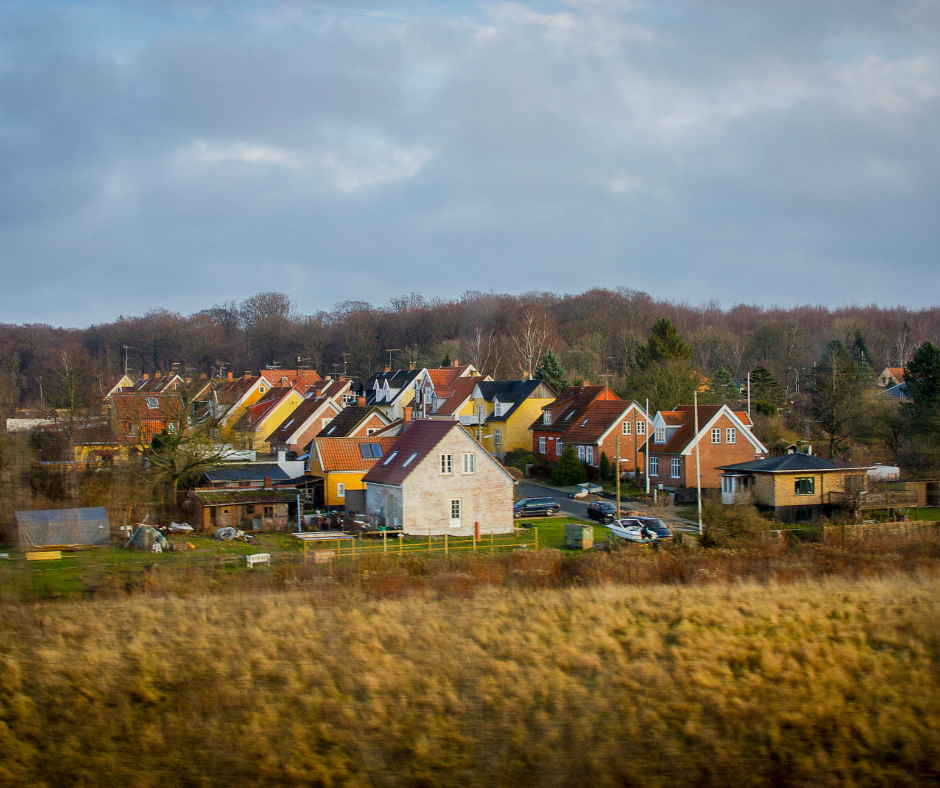Geothermal energy and flood prevention: Termovejen - “thermo roads” (Denmark)
Overview
Climate change is creating new demands across Europe: while cooling needs increase in Nordic countries as well, extreme climate events also become more frequent – including floods and storms. In central Denmark, roads can often become blocked when rainfalls are heavy. At the same time, summers are also warming up at an alarming pace. In Vestergårdsmarken, Hornsyld, someone asked the question: what if we solve two problems in one go?
So came the project of Termovejen, and idea about “thermo-roads”, or climate roads. These are special roads built of permeable asphalt, which lets water seep down through 800 meters of networked geothermal heating tubes. With this system, underground water basins are capable of retaining large amounts of rainwater.
An award-winning project
With an innovative technology and proven impact, thermo-road won the 2025 Lighthouse Award at the 15th annual Heat Pump Forum in Brussels, hosted by the European Heat Pump Association.
Project leader Søren Erbs Poulsen:
“We are deeply honored by this international recognition. The Thermo-Road demonstrates how decentralized, resilient solutions can ensure local energy security amid growing geopolitical challenges. For local communities, it delivers affordable, stable heating and cooling while protecting homes from floods and heatwaves. For society, it offers a scalable, low-risk solution that can be rapidly deployed in areas where district heating isn’t viable or where new developments require cooling.”
Image Source: Thermonet.eu
Termovejen’s climate roads: the first of their kind
The networked geothermal system, which is complemented by geothermal heat pumps, serves 12 buildings alongside the climate road. It completely satisfies their heating needs - equivalent to approximately 75,000 kWh annually. This means a 50% reduction in CO2 emissions compared to traditional oil-based heating.
Led by VIA University College, the initiative received support from PlanEnergi providing best-practice insights and cost analysis. HakaGerodur supplied geothermal heat exchangers, Dantonit provided grout for the geothermal boreholes, and Bravida installed the geothermal network, which supplies energy to the 12 Metro Therm Delta geothermal heat pumps located in the connected buildings. The latter already show very low electricity consumption, another plus of the project.
During summer, to tackle increasing cooling needs, the geothermal heat pumps cool down these houses using only 10% of the energy used in conventional air conditioning units.
“A thermal network [networked geothermal] is an obvious solution to the growing future demand for comfort cooling in Denmark. By using shallow geothermal energy, it is possible to deliver both heating and cooling in the same solution with low and flexible electricity consumption. Therefore, it makes perfect sense to install thermal roads whenever energy-efficient new buildings with a need for comfort cooling are constructed in the future.” - Søren Erbs Poulsen
This networked geothermal system not only proved the usefulness and feasibility of geothermal heating and cooling solutions including geothermal heat pumps even in low-density areas, but also the scalability of projects that combine geothermal with water retention. This system also bears benefits for water quality.
Financing the project:
The project is financed by the Energy Technology Development and Demonstration Program (EUDP), which is administered by the Danish Energy Agencyand other involved stakeholder. In addition to purchasing the plots, GS Bolig (the construction company) took over the supply system from Hedensted Municipality and also owns the heat pumps installed in the rental homes.
The total construction costs elevated to DKK 1,526,000 (equivalent to €204.380,23), averaging DKK 127,000 (equivalent to €17.009,50) per parcel.
The tenants themselves pay for the electricity consumption of their heat pumps, but their use of thermal energy from the installation in the road is included in the rent. The main cost differences centre on the increased depth of excavation – 80 cm to 130 cm, slightly higher cost for greater soil excavation and soil removal can easily be overcome as this solution becomes mainstream.
Growing impact
The thermo-road networked geothermal installation is sharing its learning to facilitate mass replication. The following investments germinated from it:
THE CHANGE, a transatlantic project (USA, SE, DEN, NOR) supported by Geothermica and national sponsors.
COOLGEOHEAT, a Scandinavian collaboration funded by Interreg ÖKS (European Regional Development Fund).
HEATCODE, a Danish project backed by ELFORSK.
Techincal details
Sources of geothermal heat:
3 vertical boreholes, each 85 m deep, with closed double-pipe probes.
1,200 m of horizontal ground loops in the roadbed at ~1.3 m depth.
380 m of additional ground loops in the thermal network.
1 longitudinal probe (100 m long, at ~2.5 m depth) under the sewer main, capturing heat from the surrounding soil warmed by wastewater.
Design features:
Roadbed is sealed with a bentonite membrane to prevent water exchange with surrounding soil.
Rainwater saturation in the lower roadbed keeps loops wet, boosting thermal conductivity and energy yield.
All heat sources connect to a central collector well (2.5 m diameter in this pilot version) housing valves, meters, and sensors.



